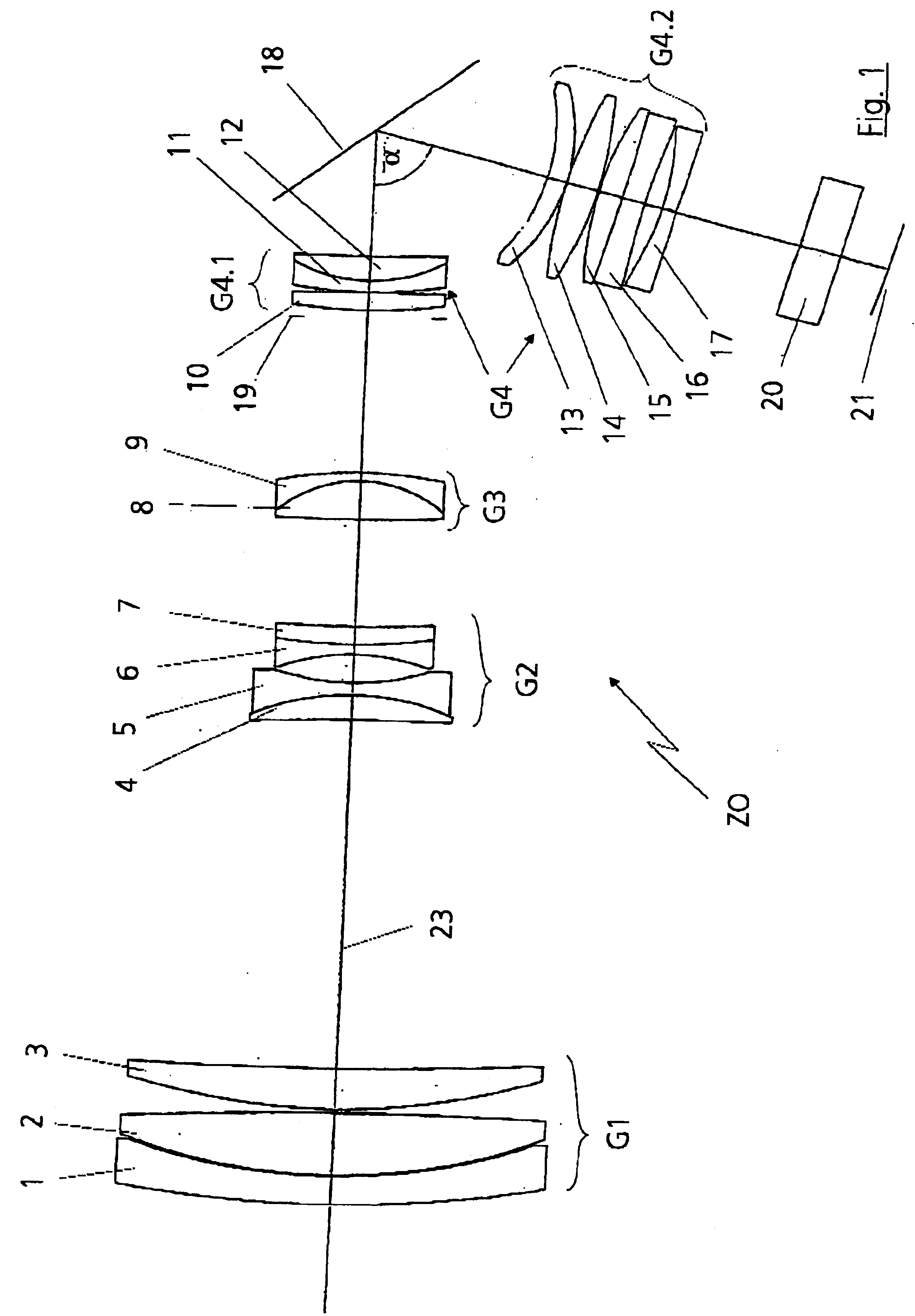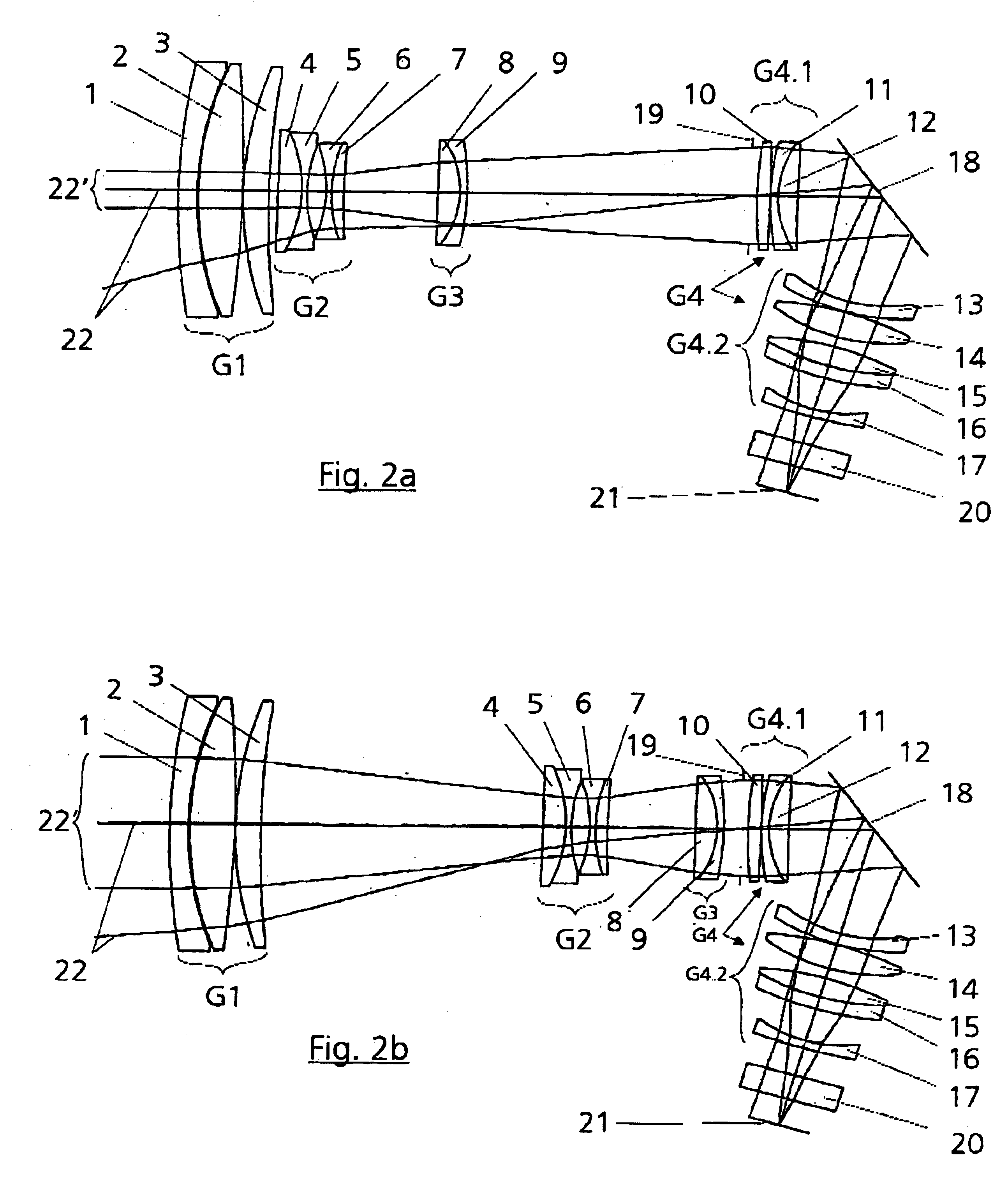Zoom lens
a zoom lens and zoom factor technology, applied in the field of zoom lenses, can solve the problems of simple conversions by means of known optical computing programs, and it is impossible to create other characteristics of the said zoom lens by a few, and achieve the effects of large zoom factor, large spectral range, and high imaging quality
- Summary
- Abstract
- Description
- Claims
- Application Information
AI Technical Summary
Benefits of technology
Problems solved by technology
Method used
Image
Examples
Embodiment Construction
section); and
[0020]FIGS. 2a to 2c show a lens section of a zoom lens of three focal length settings, where[0021]FIG. 2a corresponds to f=34 mm;[0022]FIG. 2b corresponds to f=122 mm and[0023]FIG. 2c corresponds to f=272 mm.
DETAILED DESCRIPTION
[0024]FIG. 1 shows an illustration of the principle of an inventive zoom lens ZO in lens section for military reconnaissance. The zoom lens ZO comprises a front lens group G1 of positive refractive power, a variator lens group G2 of negative refractive power, a compensator lens group G3 of positive refractive power, a base lens group G4 of positive refractive power and an optical spectral filter 20. The front lens group G1 is constructed from a negative lens 1 and two positive lenses 2 and 3. The negative lens 1 and the positive lens 2 are a split cemented component. This is advantageous because of the large difference in the coefficient of thermal linear expansion a of the two lenses 1 and 2. The positive lenses 2 and 3 are made from FluorCrown...
PUM
 Login to View More
Login to View More Abstract
Description
Claims
Application Information
 Login to View More
Login to View More - R&D
- Intellectual Property
- Life Sciences
- Materials
- Tech Scout
- Unparalleled Data Quality
- Higher Quality Content
- 60% Fewer Hallucinations
Browse by: Latest US Patents, China's latest patents, Technical Efficacy Thesaurus, Application Domain, Technology Topic, Popular Technical Reports.
© 2025 PatSnap. All rights reserved.Legal|Privacy policy|Modern Slavery Act Transparency Statement|Sitemap|About US| Contact US: help@patsnap.com



